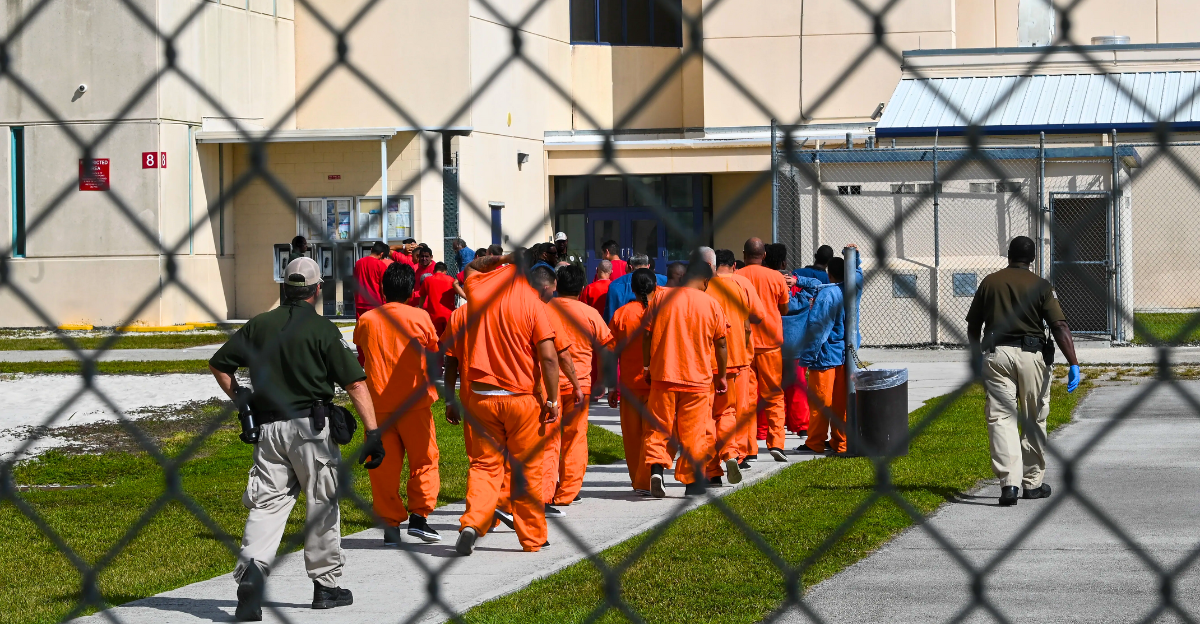
In the midst of increased immigration enforcement and system capacity issues, California recently opened the largest ICE megacenter, which is intended to process up to 200 detainees per day. This facility seeks to address the long-term overcrowding that is observed in many correctional facilities, where populations frequently far outnumber official capacity, leading to intolerable living conditions and logistical burdens.
The megacenter promises better management of the flow of detainees, increased operational efficiency for ICE, and the possibility of more humane treatment through less overcrowding by simplifying the intake and processing of detainees. Addressing existing systemic deficiencies, making the best use of available resources, and facilitating quicker case resolutions in the face of rising detention demands brought on by an increase in border arrests and immigration enforcement actions form the basis of this megacenter’s argument.
The Background of ICE’s Detention Capacity
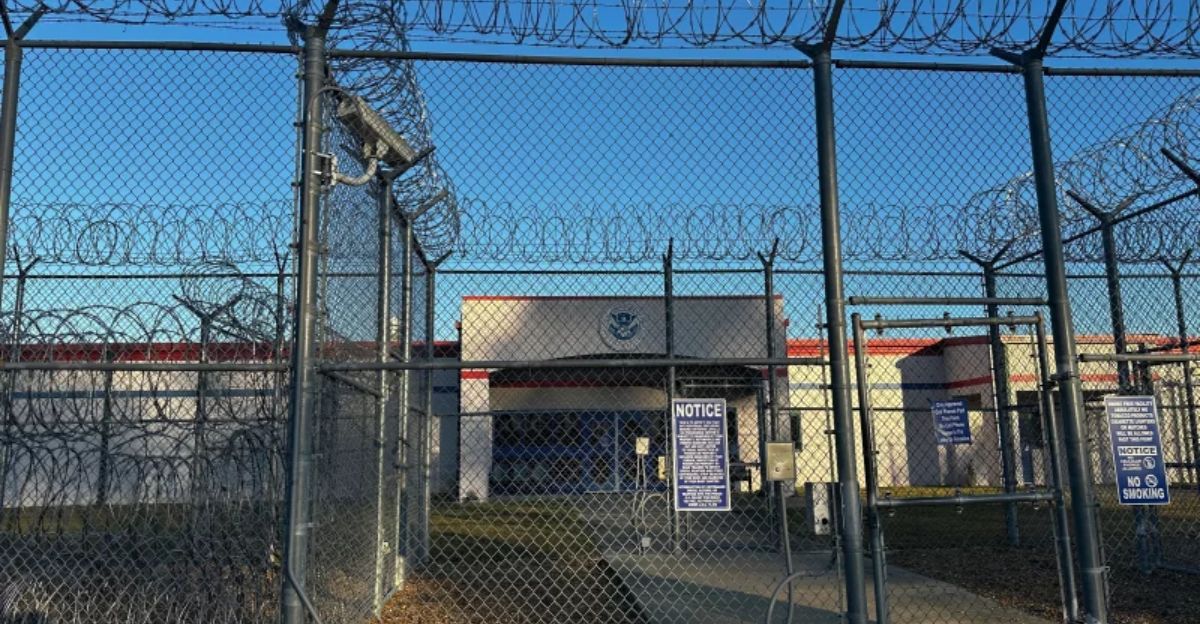
The infrastructure of ICE detention facilities has historically been chronically underutilized in comparison to enforcement requirements, with bed occupancy frequently exceeding planned limits. Detainee numbers rose to over 55,000 during the height of the Trump administration’s enforcement, placing a burden on facilities across the country.
Detainees have slept on the floors, had poor access to sanitary facilities, and experienced delays in food distribution as a result of overcrowding. California, which has one of the most significant populations of ICE detainees, is a prime example of these strains, as facilities such as Adelanto have seen unexpected spikes in population that have exceeded their capacity. Learning from past neglect and systemic failures to effectively manage detainee welfare and legal processing, this megacenter is a strategic attempt to rebuild and expand capacity in response to growing detention demands.
Factors Contributing to the Rise in Demand for Detention

Rising demands for detention have been driven by a number of interrelated trends, including changes in migration patterns brought on by global socioeconomic factors, increased arrests as a result of stricter immigration enforcement measures, and legislative pressure to remove undocumented populations.
These changes lead to increases in the number of inmates that smaller facilities and local jails are unable to handle without jeopardizing their operations. As ICE deals with backlog-induced delays and case escalations under newer immigration policy frameworks, the megacenter model provides a solution to this trend by centralizing operations and enabling scalable intake that can react flexibly and efficiently to fluctuations.
ICE Detention Operations’ Difficulties
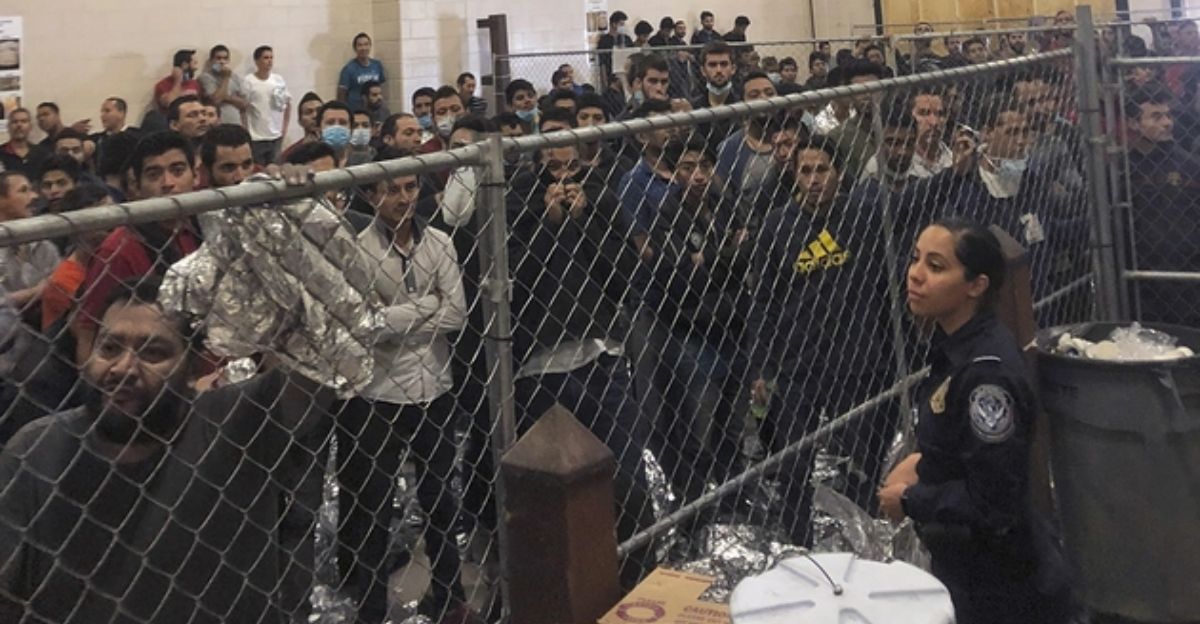
Overcrowding, resource allocation, detainee health and safety issues, and procedural backlogs are just a few of the complicated issues that come with managing ICE detainees. Under capacity restrictions, facilities have historically struggled to provide quality medical, mental health, and legal services. Systemic problems exacerbated by understaffing and infrastructure constraints are brought to light by reports of inadequate recreational access, delayed medical inspections, and poor sanitation.
The megacenter’s establishment directly addresses these issues and improves adherence to oversight and detainee standards by facilitating consolidated resources, improved staffing capabilities, and improved detainee monitoring.
Benefits of Centralized Megacenters for Efficiency
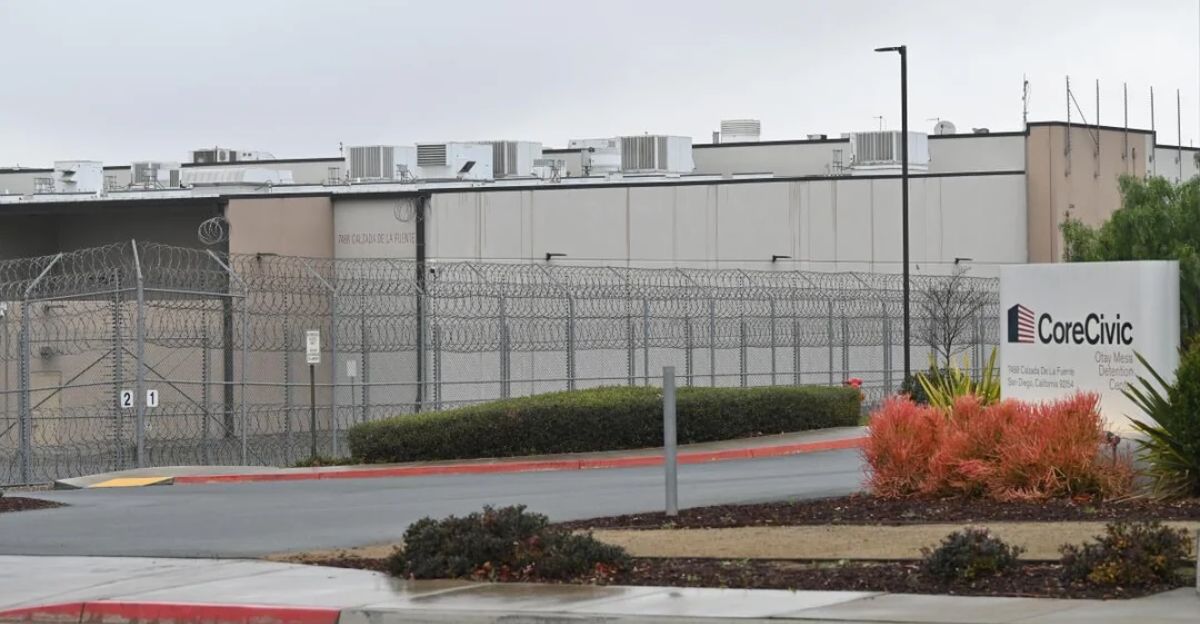
By consolidating intake, processing, and case management into one sizable facility, centralization is a calculated reaction that improves operational effectiveness. With integrated services that minimize bottlenecks, speed up legal screenings, and enable speedier decisions regarding detention or release, the megacenter enables ICE to process up to 200 detainees every day.
By combining operations, this model optimizes financial and administrative resources that are typically dispersed among several smaller locations, saving money on staffing and transportation logistics. ICE’s mission to effectively manage detainees while upholding legal and regulatory compliance is directly supported by this efficiency.
Social and Psychological Effects
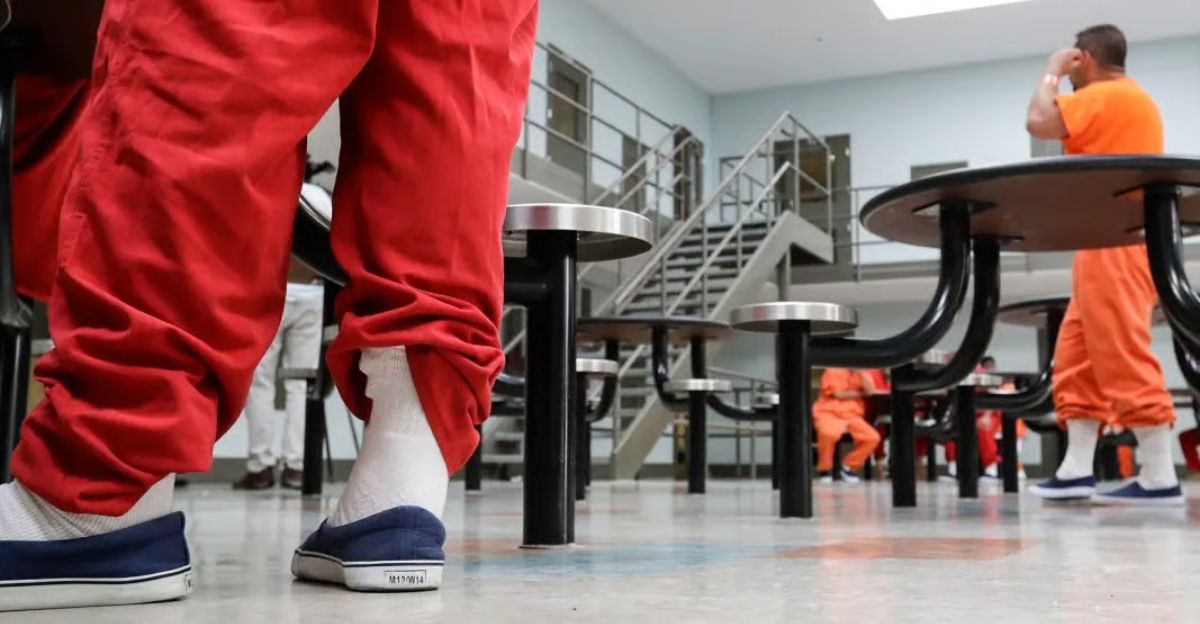
The facility affects the psychological and physical health of the detainees in addition to logistics. Detainee stress, anxiety, and the likelihood of mental health crises are increased by overcrowding and disorderly detention conditions.
Better psychological outcomes may result from a megacenter that lowers population density per location while simultaneously enhancing access to recreational opportunities and mental health services. This emphasizes that effective detention does not need to compromise detainees’ health and dignity; instead, it can advance them through scale-enabled resource allocation, which is consistent with both legal requirements and larger humanitarian commitments.
Efficiency versus Moral Issues
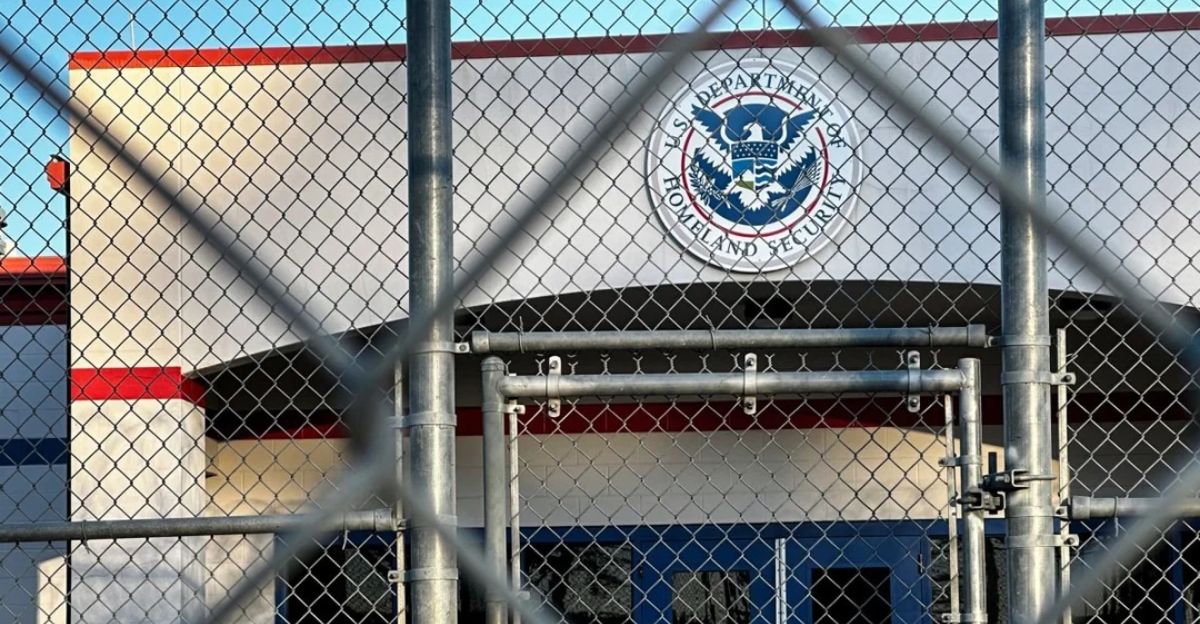
Instead of emphasizing alternatives like community supervision, the traditional critique of ICE detention expansion focuses on ethical questions, specifically whether expanding capacity reinforces detention as a punitive strategy.
However, there is a counterargument that overcrowding exacerbates conditions to inhumane levels and delays legal processing in the absence of proper facilities. The megacenter model, which aims to protect detainee conditions while coordinating enforcement with judicial efficiency under current U.S. immigration laws, is therefore not a support for mass detention but rather a practical countermeasure against systemic collapse.
Combining Federal and Local Law Enforcement

The megacenter streamlines the processes for processing, deportation, and arrest transfers by acting as a hub for coordination between local, state, and federal law enforcement agencies. By reducing duplication of effort and enhancing interagency communication, this integration eventually expedites the resolution of detainee cases and the distribution of resources.
The facility facilitates better interagency collaboration, which is essential for operational success across immigration enforcement landscapes, by housing sizable populations close to important logistical hubs.
Innovations in Infrastructure and Technology

The megacenter was constructed as a contemporary facility that integrates cutting-edge technology like biometric screening, electronic monitoring, and real-time case management software.
By integrating digital data, these innovations speed up administrative workflows and improve security and accountability while lowering the possibility of escape or abuse. In keeping with improvements over older facilities that struggled with deterioration and overcrowding, infrastructure design also places an emphasis on humane detention areas with sufficient lighting, ventilation, and sanitary facilities.
Impact of the Second Order on Immigration Enforcement

The megacenter indirectly promotes more uniform enforcement across the country by alleviating capacity constraints and overcrowding. By reducing backlog-caused delays, faster processing speeds enable ICE to focus resources on more urgent criminal apprehensions rather than extended low-risk detentions.
The facility’s success might serve as a model for similar investments elsewhere, which would ultimately change the country’s detention policies and strengthen the system’s ability to withstand changes in immigration flows.
Effects of the Economy on Local Communities
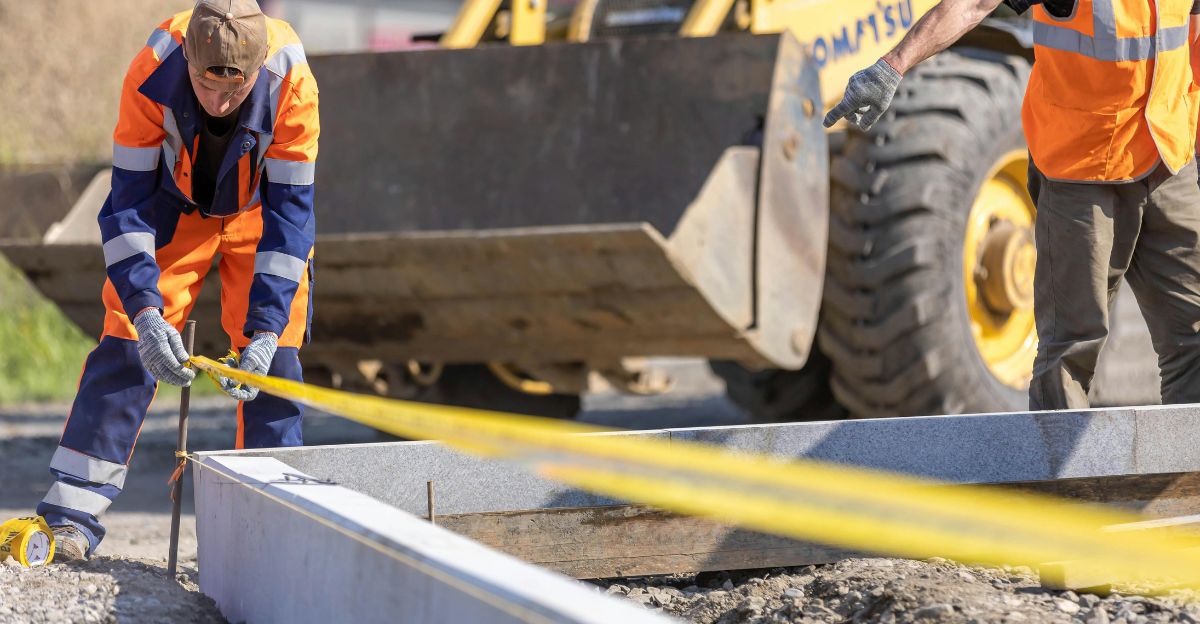
In addition to its operational advantages, the megacenter boosts local economies by creating jobs in administrative, security, healthcare, and construction. These kinds of facilities also encourage ancillary economic activity, such as contracts with neighborhood vendors for maintenance, food, and laundry services. The megacenter provides a much-needed boost of steady jobs and business opportunities to areas struggling with economic stagnation, especially in inland California.
These economic benefits are not always embraced, though, as opposition based on moral and social issues can lead to conflict within the community. Nonetheless, it can be argued that community involvement and responsible facility management can reduce social unrest while preserving financial gains and establishing a long-lasting local alliance that promotes both immigration enforcement and regional economic growth.
Legislative Support and Policy Implications
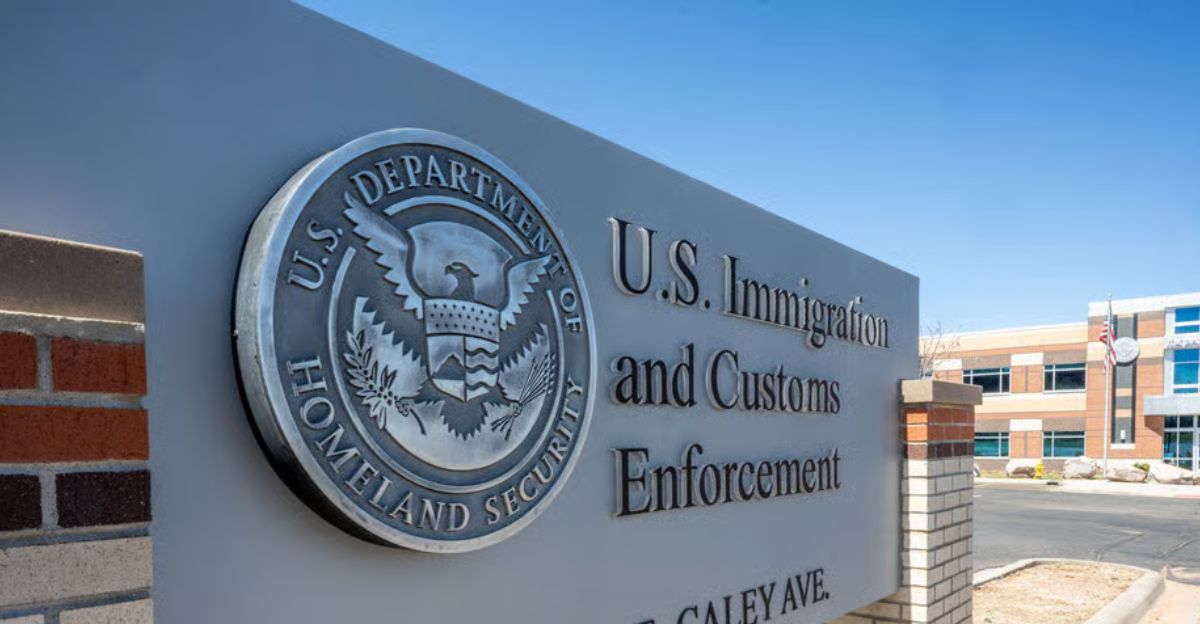
The megacenter’s establishment is indicative of a larger policy recognition of the immigration detention system’s overcrowding and inefficiencies. In order to properly enforce current immigration laws, federal legislators and ICE supporters have placed a growing emphasis on infrastructure modernization and capacity expansion. Bipartisan acknowledgement, albeit controversial, of the practical necessity of addressing systemic shortcomings is demonstrated by the funding and legislative support this project has received. This investment supports measures meant to strike a balance between upholding legal and humanitarian norms and the rigor of enforcement.
Furthermore, the megacenter serves as an example of how policy changes in response to enforcement and demographic realities can result in the development of new infrastructure, which could influence future legislative agendas that place a higher priority on comparable advancements across the country.
Aspects of Human Rights
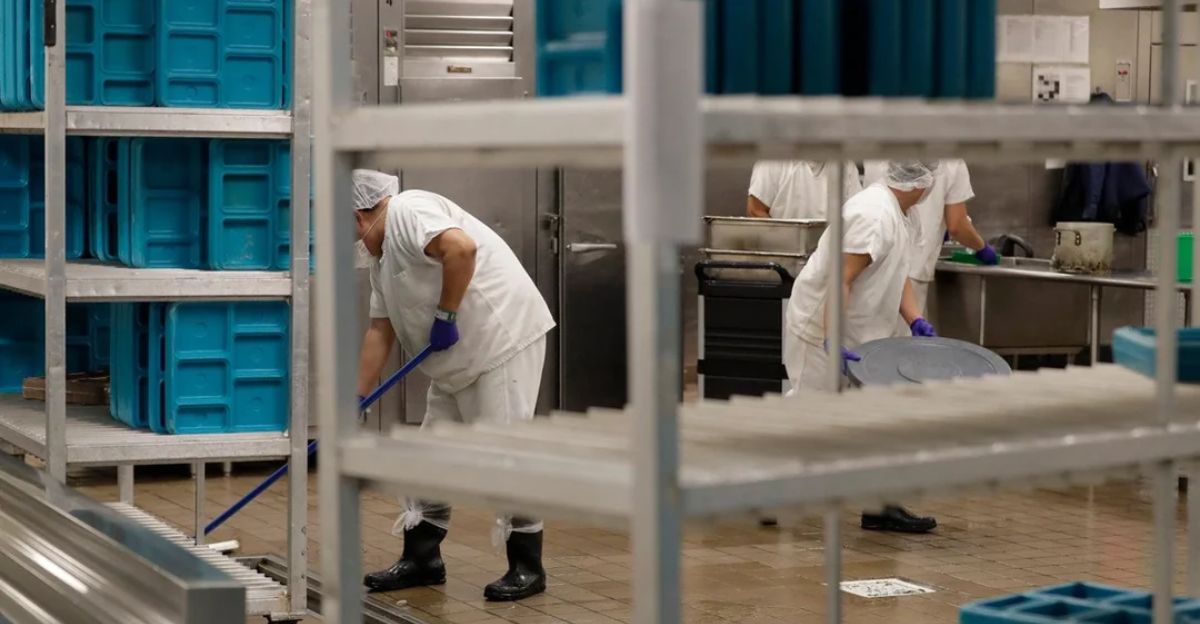
The megacenter addresses historical abuses that are linked explicitly to overcrowding and resource scarcity, even though the expansion of detentions sparks discussions about human rights. By providing sufficient space, hygienic access, cleaner facilities, and more dependable medical and mental health services, it enhances the living conditions of detainees. In order to meet ICE’s legal responsibilities under the Prison Rape Elimination Act (PREA) and other laws, the facility is taking corrective measures.
The megacenter’s operational transparency and dedication to oversight lower the risks of neglect, abuse, and litigation that have historically beset smaller, overburdened centers, even though detention itself is still controversial. Within the limitations of U.S. immigration enforcement procedures, modernization is a crucial human rights risk mitigation tactic in this regard.
Adelanto’s Teachings
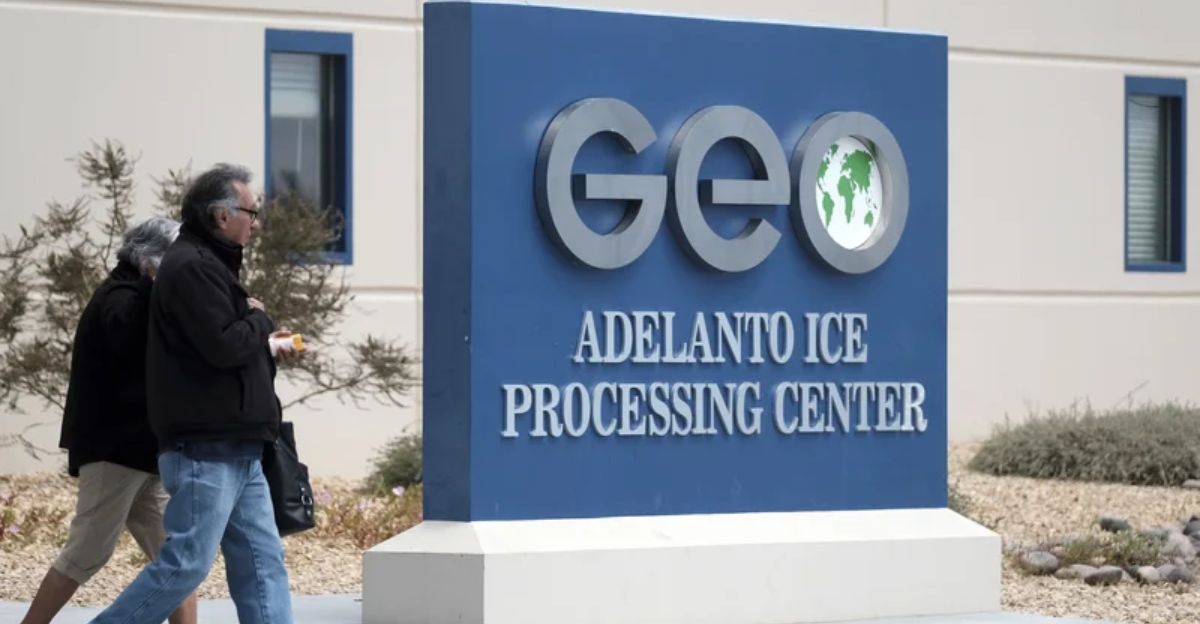
The crisis at the Adelanto ICE Processing Center served as a stark reminder of what happens when detention capacity is not scaled responsibly. Within weeks, the number of inmates at the facility increased from 300 to 1,640, leading to severe shortages in food, water, and medical supplies. Widespread advocacy and legal actions were prompted by reports of detainees living in filthy conditions and having to wait a long time for necessities. These difficult lessons are incorporated into the new megacenter through improved service protocols and planned flexible capacity.
In order to prevent conditions from worsening during population surges, this includes enhanced emergency responsiveness, better supply chain logistics, and higher staff-to-detainee ratios. These proactive design decisions demonstrate how systemic failures and human suffering can be avoided through infrastructure foresight based on past mistakes.
Stress Management in Institutions
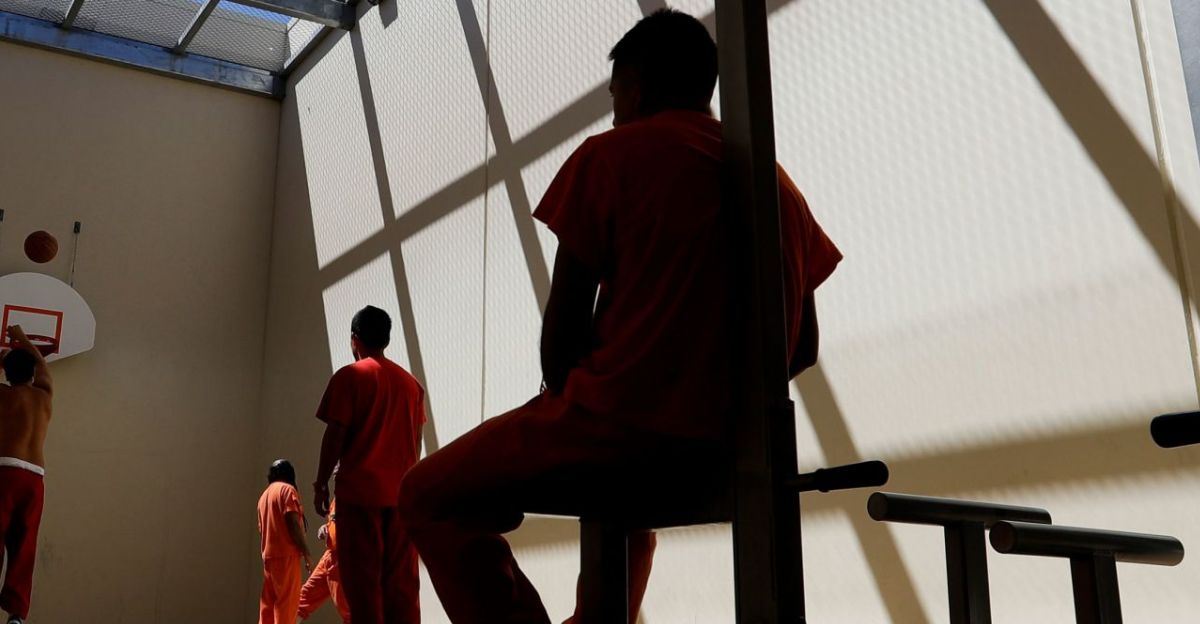
Psychological studies highlight the significant mental health stress that detention environments bring about, which is made worse by uncertainty and overcrowding. Long-term confinement without organized programs increases facility management difficulties by causing behavioral issues, anxiety, and depression. Routines, leisure activities, and mental health services that are known to reduce institutional stress and enhance the well-being of detainees are made possible by the megacenter’s ability to keep its population under control.
From the standpoint of psychological return on investment, these interventions make the environment safer for both staff and inmates by lowering violent incidents and increasing compliance. In the end, funding mental health facilities in correctional facilities results in both operational stability and human dignity, two advantages with quantifiable results backed by clinical evidence.
Alternatives in the Community
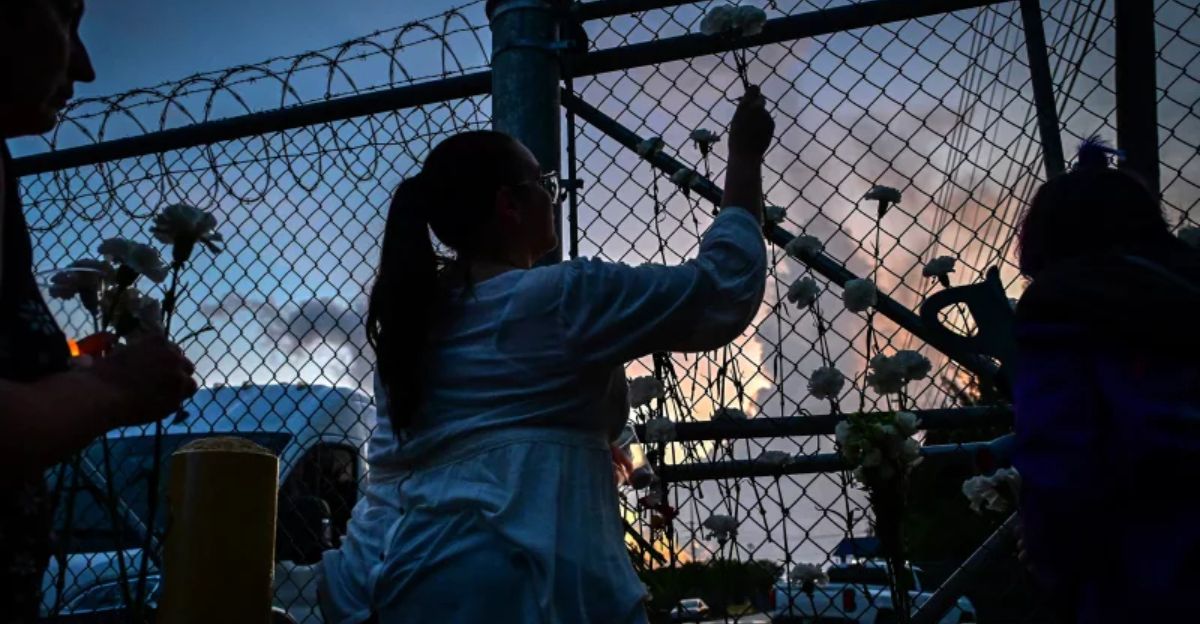
Despite being promoted for non-high-risk individuals, community-based alternatives to detention are still not widely accepted and receive insufficient funding across the country. Many jurisdictions lack the social services infrastructure and rigorous judicial oversight needed for these programs.
The megacenter serves as an essential supplement to ensure that higher-risk or criminal detainees receive secure detention; it does not take the place of such alternatives. When there are no viable community options, particularly for people who pose a flight or safety risk, it maintains system integrity. This dual-track model suggests an integrated approach rather than a reliance on either detention or alternatives alone, acknowledging that detention policy must realistically strike a balance between humanitarian objectives and public safety imperatives.
Improvements in Safety and Security
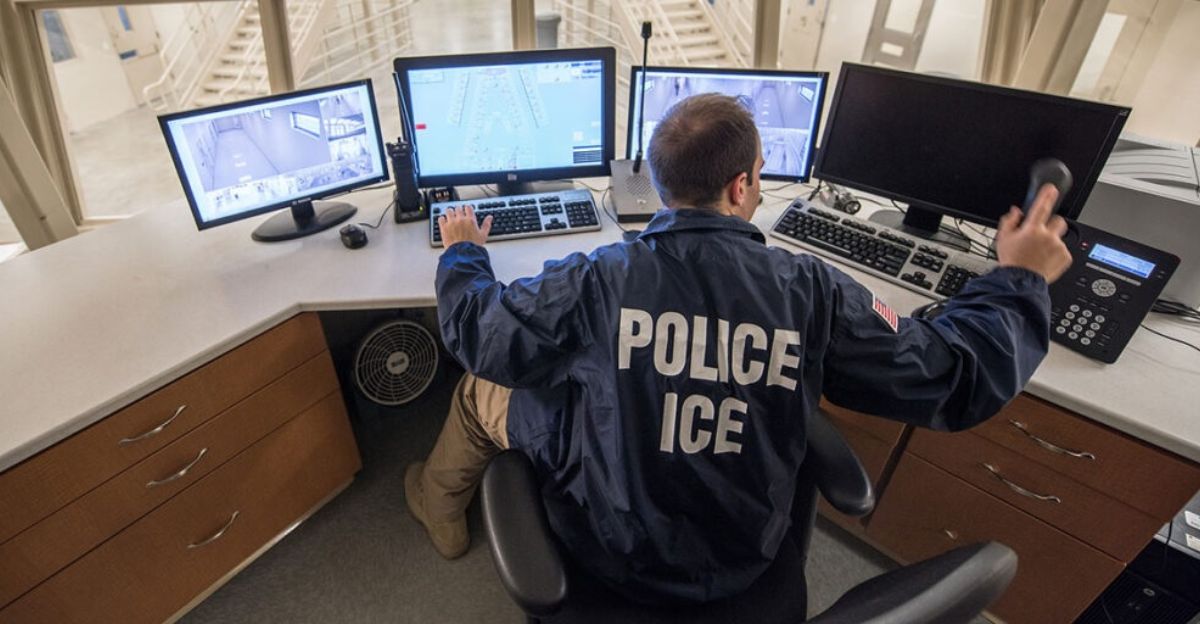
Security is a perennial concern in detention, with overcrowding linked to increased violence and misconduct. By implementing sophisticated surveillance technology, creating quick incident response teams, and permitting suitable staff-to-detainee ratios, the megacenter raises safety metrics.
By distributing detainees among suitable, contemporary areas, tense crowding that threatens safety and order is avoided. Clear operational standards and improved guard training procedures lower the possibility of lawsuits and abuse claims. Any secure detention setting must have a culture of accountability and protection, which is fostered by these characteristics. Beyond compliance, these security enhancements have a positive direct impact on the welfare of detainees and employees.
Social and Political Responses
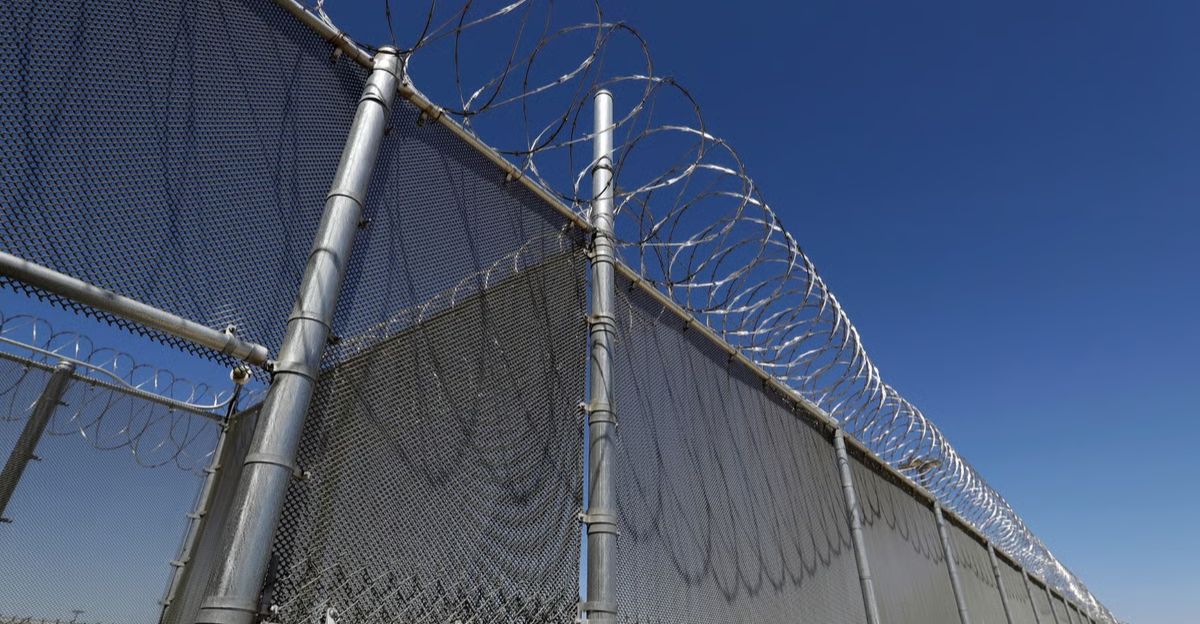
Opening a large ICE facility inevitably stirs political and social debates, polarized between advocates emphasizing order and critics warning against expanded detention. Supporters highlight the megacenter’s practical necessity in light of the realities of immigration enforcement today, highlighting enhanced conditions and expedited processing. The growth of the detention infrastructure is questioned by critics as institutionalizing punitive immigration policies and raising ethical concerns.
In order to resolve this polarity, a thoughtful conversation that emphasizes workable solutions to avoid humanitarian crises in detention and makes sure that enforcement is balanced with dignity is necessary. By presenting the megacenter as a part of responsible reform rather than unbridled expansion, transparent community engagement promotes communication and lessens polarization.
Prospects for the Future and Scalability
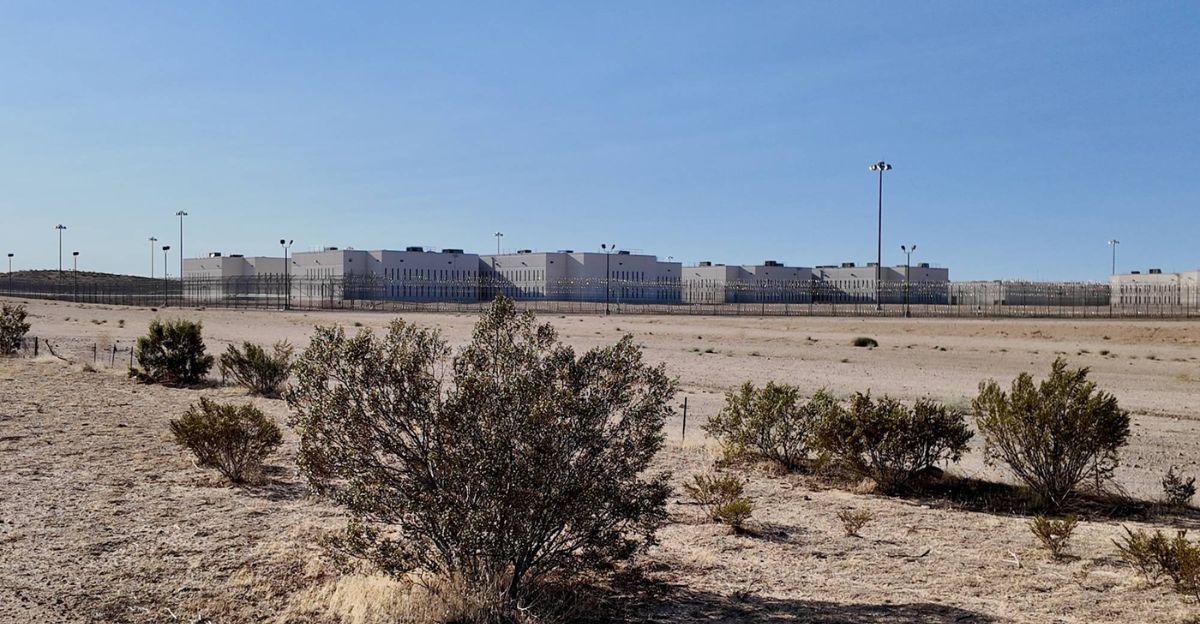
Scalable detention infrastructure, such as the California megacenter, equips law enforcement to react quickly to shifting migration brought on by international crises and shifting U.S. policies. This facility’s model and anticipated expansions will increase capacity across the country and lessen the need for temporary, overcrowded facilities.
This forward-thinking strategy incorporates technology and humane design principles while anticipating shifting detention demands. Through centralized management and pooled resources, scalability also reduces costs and puts ICE in a position to change with the times. In the face of shifting demographic pressures and political priorities in immigration, this proactive approach is crucial to preserving enforcement effectiveness and legal compliance.
In Conclusion

The California ICE megacenter marks a significant breakthrough in striking a balance between detainee welfare, operational effectiveness, and expanded detention capacity. In light of the growing number of detainees, more than 60,000 nationwide, with thousands held in California, the facility represents a necessary response to humanitarian concerns and systemic overcrowding. It reduces abuses linked to overcrowding and speeds up case processing by combining contemporary technology, psychological care frameworks, and operational simplification.
Notwithstanding divergent views, the megacenter represents a workable way to address long-standing infrastructure deficiencies and puts ICE in a position to handle future immigration enforcement demands with increased safety, agility, and compliance. It serves as an example of long-term change at the nexus of human dignity, policy adaptation, and public safety.